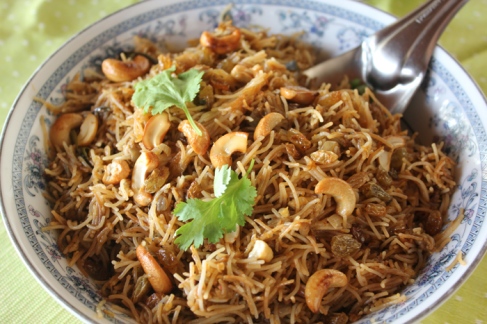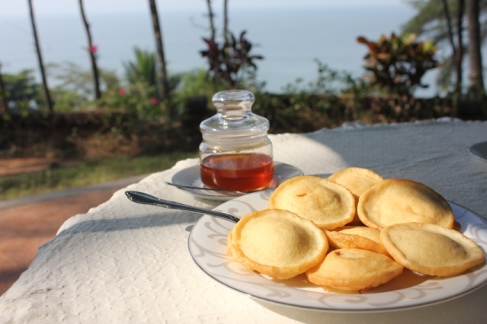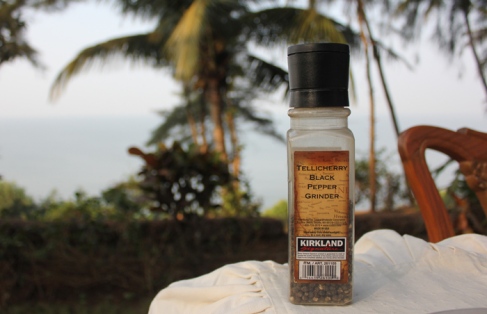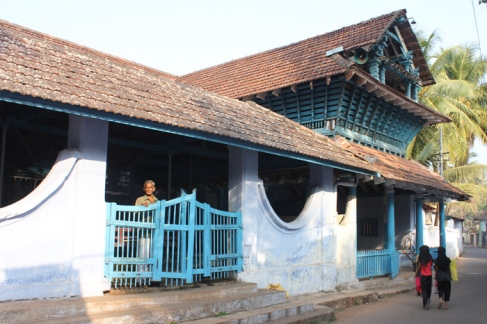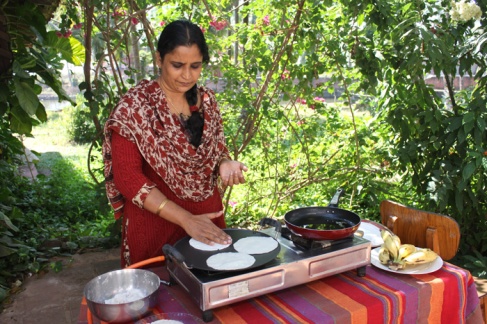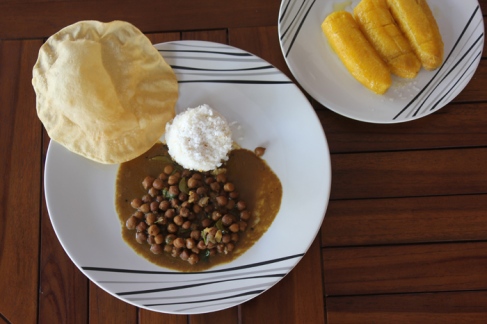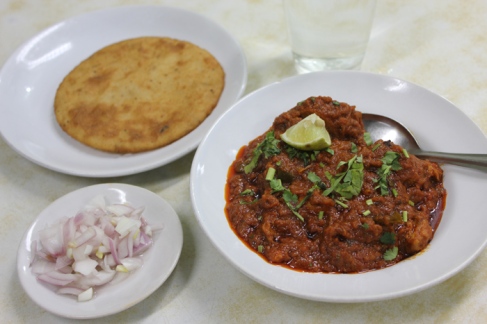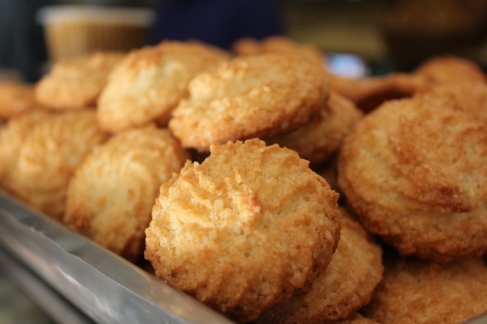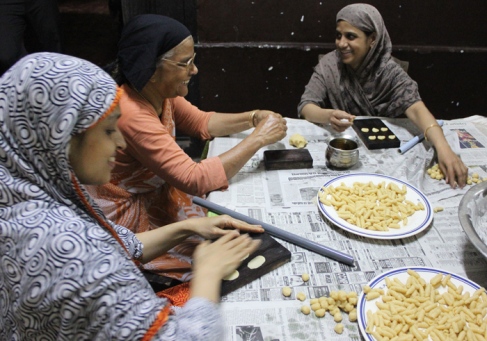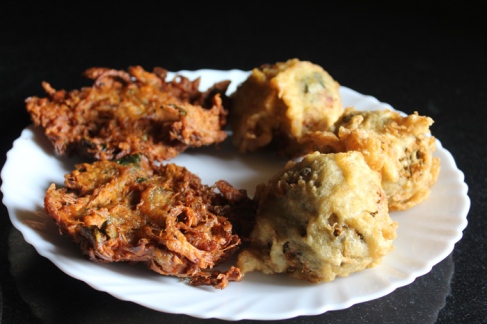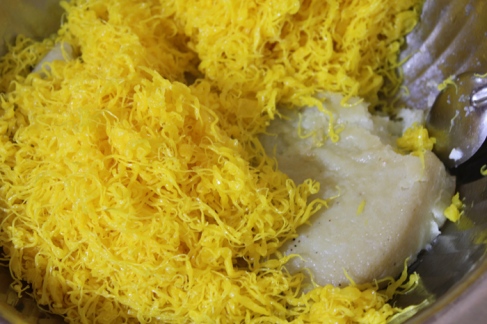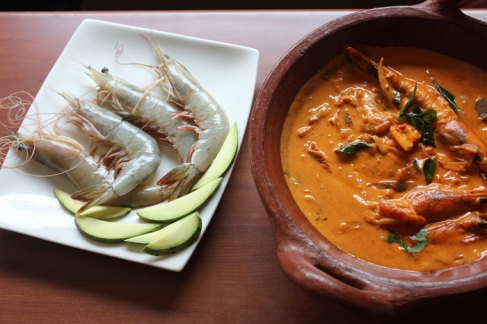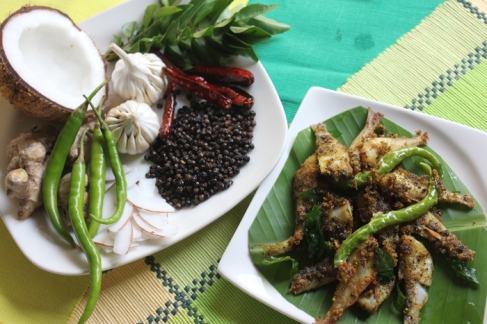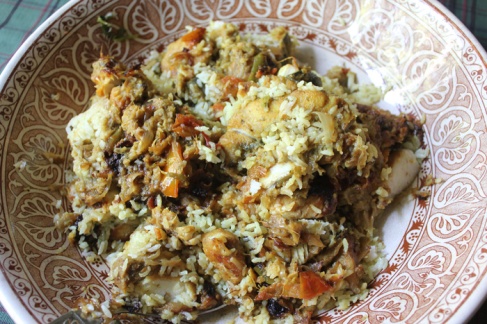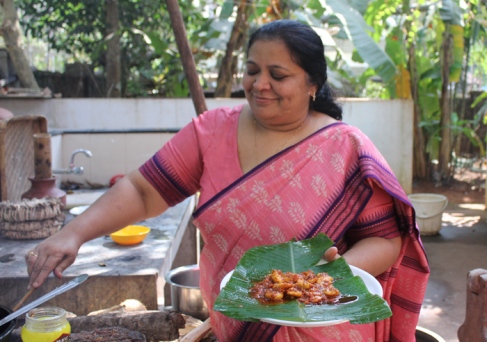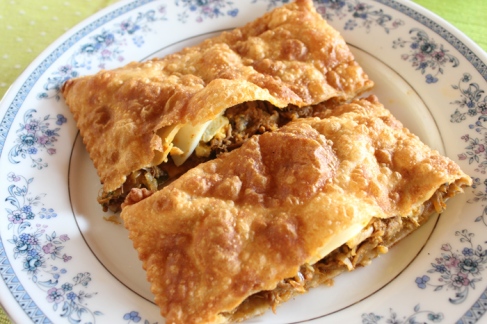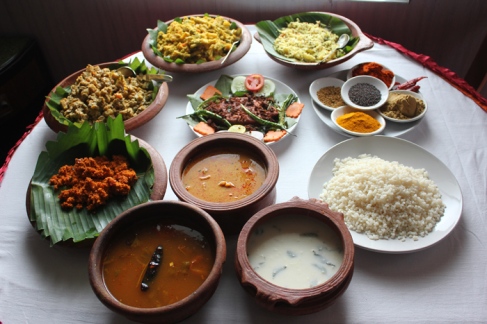ANURAG MALLICK & PRIYA GANAPATHY visit Kannur, Thalassery and Kozhikode to unlock the scents of Arabia wafting out of the kitchens of Malabar
“They may take the pepper vine back to England, but can they also take the Thiruvathira Njattuvela?”
– Zamorin, king of Calicut (on the 14-day period of steady rain in June-July that triggers pepper growth)
Watching the waves of the Arabian Sea lap against Overbury’s Folly, we wondered what made Thalassery more special than other places on Kerala’s Malabar Coast. It was at Tellicherry Maidan that cricket was first played by natives in 1802 under Arthur Wellesley, it was here the first cake had been baked in Kerala, it was also the cradle of India’s circus industry and in almost every conversation on food, Thalassery was reverentially referred to as the Mecca of Moplah cuisine. With the afternoon’s subtle semiyan biryani (vermicelli and shreds of mutton) and aloo bonda still sitting pretty in our bellies, we dragged ourselves back to Ayisha Manzil for some culinary enlightenment.
Mimicking our plight, the car creaked up the hillock to the beautiful 150-year-old homestead. Mr. Moosa led us straight into the kitchen where his wife Faiza was neatly arranging the ingredients. His soft reassuring voice and twinkling eyes made us feel like children about to listen to a suppertime story from a favourite uncle. ‘Thalassery’s hospitality is legendary and the level of refinement is quite high. Though the English established the Tellicherry Fort to protect their trade interest in pepper, the irony is that we don’t use pepper at all in our cooking. Except to garnish eggs’ he chuckled. ‘And to brand our cooking lessons – Tellicherry Pepper! I’ll leave you with Faiza now.’
In under an hour, Mrs. Faiza taught us chemmeen vertiyattu (tamarind prawns), its accompaniment neyi choru (ghee rice) and vattilappam, a Malabari version of Creme Caramel, with coconut milk and jaggery replacing milk and sugar. Dinner was soon laid out in the open patio and the evening’s apprentices had transformed into gourmet chefs by candlelight. The spread, like the thousand odd dinners Mrs. Faiza had helped guests conjure earlier, was well appreciated.
Looking at the bottle of whole black pepper on the kitchen shelf made us wonder how the humble pepper vine with its heart-shaped leaves managed to entrap the world with its charms. Over centuries this fiery spice notorious as ‘Tellicherry Black’ had launched ships laden with Arab and Mediterranean seafarers to establish trade links with Kerala, an emporia of exotic spices. Maritime trade bolstered tremendous commercial activity that eventually led to the famous spice wars.
The rise of the Ottoman Empire and the Arab trade blockade prompted Portuguese voyagers like Bartolomeu Dias and Vasco Da Gama to bypass the Arab middlemen and find a direct trade route to India. Using the tempestuous monsoon winds, they set sail around the African continent and across the Indian Ocean to reach Malabar in 1498, triggering the Age of Discovery for Europeans – paving way for the Dutch, the English and the French.
While each of the different cultures that infiltrated the western coast left an indelible impact on the region and society, the most lasting influence in Malabar was that of the Arabian traders. When the incessant monsoons prompted several rich Muslim merchants to stay back until favourable conditions returned, many settled down and married local women. The alliance was usually a short-term arrangement, solemnized with the payment of a mehr or token bride price. The young local brides and their children were initiated into Islam. This temporary marriage was conveniently annulled when the traders had to set sail and return to their original homes.
Historians suggest that the natives fueled this move as an escape from the prevalent caste system and Brahmin domination of the times. This intermingling resulted in the creation of a distinct Malayalam speaking community of Muslims that came to be known as Mapilas (or Moplahs). Derived from Maha-pillai, the term referred to the son-in-law or new groom, who was held in high esteem and treated as a special guest. A fact that is beautifully reflected even today in the elaborate courses of food served to the groom’s family in a typical Moplah wedding.
As the second largest community in Kerala accounting for nearly a quarter of the population, the Mapilas are known for their diverse cuisine with influences from across the globe. Many signature dishes were conjured up in the joint family system where women stayed indoors and had the time to experiment and come up with imaginative names for their creations. Mutta mala, a steamed egg white pudding with lacy garnishing of yolk was named after its garland-like appearance while Unnakaya, a spindle-shaped fried dumpling of mashed bananas with coconut filling resembled the unnakayi (silk cotton pod).
Barely two days ago, in the sun-dappled courtyard of Kannur Beach House at Thottada, Rosie had given us a cooking demo of unnakaya under the shade of a bougainvillea shrub. She explained in her clipped polished accent, ‘Mapila cuisine is labour intensive. Most dishes have meat, egg, coconut, bananas and ghee involved. They are subtle and rich but not heavy.’ She deftly stuffed the coconut filling into the pliant banana dough and shaped them into oval pods. Looking at the oil in the pan, our eyes grew large as slender lorises and Rosie laughed, ‘Completely submerge it in oil, my mother would say, but partially is ok too’!
Her husband Nazir, gourmet cook and her top critic plied us with delectable trivia. ‘In the Vadakkan paat (Northern ballads), when the hero Ali is getting ready for battle, his mother is preparing neyi choru (ghee rice) for him, not biryani. So definitely, neyi choru is more authentic Mapila fare,’ he justifies. ‘Biryani came later, perhaps a Moghul influence via the Deccan. But the Malabari biryani, especially in Thalassery, is subtler and not heavily flavoured like its North Indian counterpart.’ Rosie gave a quick presentation of the hand-patted wafer-thin ari pathiri, which are rolled out like chapatis and much thicker in Calicut. ‘Amazingly the method of preparing a dish varies over short distances’ Rosie added.
At Shanti Theeram, our beachside base at Kannur’s Ezhara beach we enjoyed the lively company of our host, the matronly Mythili aunty who churned out a feast of homely Malabari food. We sampled her chicken biryani, tapioca-fish mash, fish curry meals, delicious snacks like ari unda and the softest puttu with kadala curry. We figured the only way to deal with aunty’s loving heapfuls was a good workout.
In came energetic Mr. Sathyan, the much-lauded Tourism Police officer, famous for his ability to read the indecipherable Olde Dutch inscription on a stone tablet inside St Angelo Fort. ‘Your Dutch has improved, but your Malayalam has weakened’, we ribbed him as we set off on a whirlwind tour of Theyyam performances, the fishing harbour at Mapila Bay, Arakkal Kettu Museum of the Arakkal Ali Rajas (Kerala’s only Muslim royal family), two 400-year-old mosques Mohiuddeen Palli and Jumaat Palli, the Folklore Museum, and Muzhappilangad’s drive-in beach before drifting on the serene Valiyaparamba backwaters in a houseboat. In between, we refueled at Kannur’s busiest lunch home. Odhen’s on Onden Road specialized in set meals with an array of fresh fried seafood – from aikora (kingfish) to aila (mackerel) cooked with dizzying swiftness in a smoky, aroma filled kitchen.
Back at Thalassery, dawn had broken and it was time for a walk to the frenetic fish and vegetable market. Green mussels shone in the sun like ornaments and a wisp of a lane lined by dry seafood and vegetable stalls led to a large shed by the seafront where the morning’s catch had been unloaded. It was like meeting the who’s who of the Arabian Sea – stingrays, baby sharks, snappers, garfish with fisher folk shouting out their strange local names. One species was called ‘pudiya mapila’ kora as it was bright pink like a ‘new bridegroom’!
We made a quick stop at Harbour City Mall to visit the iconic Mambally’s, Kerala’s first bakery. In 1883, Carmae Brown (son of Murdoch Brown who built Ayisha Manzil), an English planter with cinnamon estates at Anjarakandi asked a local biscuit maker Mambally Bapu to bake a plum cake for Christmas. Sourcing recipes from English ladies and using homegrown spices like cloves, cinnamon, cardamom and nutmeg, Bapu baked the best plum cake this side of London. And thus, Kerala’s bakery revolution was born. To commemorate the 129th anniversary of the first cake baked at Thalassery, Brownnies of Kannur recently created a 350ft long special edition cake!
An serendipitous invitation to visit one of Thalassery’s old Muslim homes took us to a nondescript cul de sac opposite the maidan. The Bengla, the home of VB Ishaque, Hon. Secretary of the Cannanore District Cricket Association is an exquisite structure built in 1760. With wood lattices, a massive doorway, coloured glass windows and old chandeliers, it has survived five generations.
Renowned for its fantastic collection of cricket memorabilia lovingly chronicled by Ishaque’s uncle Mackey Sahib, we were in for a double treat when we were ushered into the inner chambers where five Muslim women were rolling out karaka appams (date-shaped savories) and baskets of snacks to be sent to the Gulf. They insisted we try some of each. ‘The beef ada (filled with dried beef masala) can stay for a month’, said one of the ladies. ‘Only if one has the willpower not to eat it’, we piped back!
Soon, we bid our goodbyes and drove past the hookah shops of Quilandy and the Sargaalaya Art & Craft Village at Iringal towards Calicut. To accommodate Calicut’s sheer number of eating options, we politely declined all meals at Hari Vihar, the Ayurvedic homestay, much to Dr. Srikumar’s chagrin. ‘What about ‘Hindu’ Malabar cuisine?’, he stressed. ‘About as important as Italian cuisine in Punjab’ we teased and set off again.
Sagar, a family-run eatery housed in signature laterite buildings prided itself in doing things the old-fashioned way. ‘Masalas are hand-pounded, we use water from our own wells, only wood fire is used to make biryanis and all the recipes have been crafted by my father Hamsa Haji’, Gafoor the 3rd generation owner explained on our kitchen tour. The day begins at 6:30am with parottas, appams and idiappams served with mutta (egg) roast, fish curry and cherupayar (moong dal) curry. ‘To put it bluntly, our pricing is reasonable, our service is zero, but our quality is excellent,’ he say wryly before adding, ‘And that’s why people come back! Our biryani is over within 2 hours.’
Another landmark was Bombay Hotel on Silk Street, started in 1949 by Kunhi Ahmad. Fame of its Moplah snacks like pazham nerchadu (banana stuffed with coconut, dry fruit), pazham pori (sweet batter-fried banana slices), bonda, samosa, mutton cutlet and erachi pathiris (rice flour pancakes with meat filling) had spread so much, that after 60 years, the small eatery was remodeled into a 250-seater restaurant. But why ‘Bombay’? Mohammed Najeeb smiled ‘In those days, it seemed exotic for eateries to be named after port towns – Colombo, Paris, Tashkent, Bombay!’
Meeting Zainabi Noor, Calicut’s first woman restaurateur at Zain’s was akin to meeting the lioness in her den… at lunch hour! Like a drill sergeant, she roared orders at her helps in a high-pitched tone and instantly transformed into a petite picture of piety as she turned to us with ‘Masha Allah’ on her lips. In a land known for its hospitality, the idea of ‘selling’ food didn’t go down well initially, she reminisced. But her Afghan husband Noor Mohammed had been away in the Gulf for 15 years and she wanted something to do.
Thus Zain’s was born, winning patrons over with Moplah specialties like ari kaduka (mussels stuffed with rice), kozhi nerchadu (chicken fry), mutta surka (small egg pancakes) and pathiris with beef, fish or just rice flour. After losing her husband 2 years ago, Zain-tha’s efficient daughter Shireen and son-in-law Mustapha help her run the place.
Liju and Sumesh of Paragon are another couple who define Calicut’s foodscape. While Liju focused on Salkaram, a restaurant named after the traditional welcome feast in a Moplah wedding, Sumesh looked after business expansion and experimentation. ‘For us the challenge was to cater to the 2 million strong local populace who wanted something beyond the ordinary. So we took the Moplah essence a few notches higher.
Everybody grew up on the taste of pachha maangam (raw mango), so we created the Spicy Raw Mango Salad and Mango Prawn, our biggest hits. In the rains, mothers would give children a fortified chicken broth that was reduced with spices, so we introduced Naadan Kozhi Soup. Chilli Orange Juice and Lime Mint Juice are spiced up concoctions that pair well with our food and tropical climate. Our biryanis and dry fries are so popular that people pack and take it abroad, so we opened shop in Dubai!’
Chef Thomas, Paragon’s executive chef spoke about a peculiarity. ‘Unlike other regions, in Malabar, it’s fairly common for people to start their day with a breakfast of meen molagattu, a medium spicy thin gravy, that can also be made with chicken and mutton.’ Sumesh adds ‘Food is so important to the Mapila community that families in Thalassery used to compete to treat the groom’s party during salkaram until they went bankrupt!’
Over the next few days, we sampled almost everything Calicut could throw at us – the fish curry meals at Hotel Alakapuri, beef biryani at Rahmat, fish fry at Amma hotel, Kumari Banana Chips and the Nannari Sherbet ‘Shop-with-no-name’ near Paragon, Strawberry milkshake opposite Mananchira Square, Sankaran Bakery and Maharaja Sweets on SM Street for Kozhikode Halwa, we tried it all.
But the best was yet to come, an encounter with Abida Rasheed, the Grand Dame of Moplah cuisine. A cuisine consultant with leading hotel chains and veteran at several Malabar food festivals across India, to her cooking was more art than commerce. We were invited to her beautiful riverside home on Calicut’s quiet outskirts for a live demo of her specialty – Fish Biryani.
‘There are three things I never travel without – my palakadan chatti (clay pot of palakkad mud, the most flavoured one), cheen chatti (cast iron vessel) and puttunkutti (wooden ladle)! Besides the utensils, even the type of firewood used affects the taste of the dish.’ We didn’t see her ithathas (traditional women cooks) with headscarves and heavily jeweled ear ornaments, but her other helpers swung into action – stone grinding the masalas and frying the fish. ‘In our biryanis, we only use small-grained Bengal rice, usually from a windswept valley and infused with an aroma.’
Between rapid stirs of the ladle, Mrs. Abida would slip in a tip or two from her cache of centuries old kitchen secrets. ‘The key to our cooking is the oil – we fry the onions, remove it and reuse the oil which is imbued with a certain flavour. And, this mix of seven spices,’ she said with a twinkle, sprinkling some on the rice, before the lid was closed and sealed. Parallelly, some muttappams and prawn kakkathi, a secret from the royal kitchens with a rich tangy tomato-base had been churned out in minutes.
Lunch with her husband and daughters was sprinkled with lively conversation and anecdotes. ‘Like language, the pathiri changes every few kilometers. Moplah cuisine is subtle and pepper tends to overpower all other flavours. But our forefathers were smart too. Why eat pepper, when you can sell it for the price of gold!’ But if Malabar’s Moplah cuisine was so distinct, why wasn’t it well known to the outside world? ‘For years, to most tourists Kerala started Cochin southwards and its main dish was karimeen pollichathu! But with the opening up of the Calicut Airport, emergence of homestays, awareness of Theyyam and food festivals, Moplah cuisine too is slowly getting the recognition it deserves.’
It was amazing. Like tapioca, potato and pineapple, the unnakaya, mutta mala and country biscuits (still called biscot) were Portuguese in origin. The biryani came from Persia. Suleimani chai and turka pathiri had Turkish lineage. Alissa (broken wheat and meat porridge) was Arabic. The women’s headscarf (thattam) and the green belt worn by men came from Yemen. Yet, it was a Malayali sense of enterprise that adapted all these influences and gave it a new identity – Moplah! ‘How many Moplah dishes do you know?’ we ask. Mrs. Abida’s dimples deepen, ‘Over 500.’ There’s a lot we haven’t tasted. But then again, after this food trail, we felt as stuffed as a camel in a Bedouin wedding feast – stuffed with a goat stuffed with a lamb stuffed with a chicken stuffed with eggs!
Where to Stay
KANNUR
Shanti Theeram
Ezhara Beach, Ph 9947193896, 9995868880 http://www.shantitheeram.com Tariff Rs 4,500 incl. breakfast and dinner.
A lovely spacious beachside villa with five rooms, it is the perfect perch to put your feet up. Mrs Mythili, the host ensures that you are thoroughly pampered with her culinary skills.
Kannur Beach House
Thottada Beach, Ph 0497-2836530/2708360, 9847184535 http://www.kannurbeachhouse.com Tariff Rs.2,400 incl. 2 meals
A charming homestay run by Rosie and Nazir with a rustic flavor, backwater boat rides and fine Mapilla cuisine.
Ezhara Beach House
Ezhara Kadappuram, Ph 0497-2835022, 9846819941, 9846424723 http://www.ezharabeachhouse.com Tariff Rs.2,400 with breakfast and dinner.
A century old blue bungalow by the beach overlooking a garden and a rocky outcrop in the sea.
THALASERRY
Ayisha Manzil
Court Road, Opp Sea View Park Ph 0490-2341590, 9847002340 http://www.ayishamanzil.com
Tariff Rs.10,000 with all meals (15% off-season discount, May-Sep), Rs.3500 for 1-hr cooking course
A stunning 150-year old colonial hilltop bungalow overlooking the Arabian Sea with an exclusive cooking school, private swimming pool and boutique homestay run by gourmet cook Faiza and CP Moosa.
The Pearlview Regency
Pearlview Junction, Koduvally Ph 0490-2326702-4 http://www.pearlviewregency.com Tariff Rs.1500 + taxes
Paris Presidency
New Paris Complex, Logan’s Road Ph 0490-2342666-8 http://www.parispresidency.com Tariff Rs.700-950 incl. tax
A regular city hotel with a popular restaurant attached.
KOZHIKODE
Hari Vihar
Bilathikulam, Ph 0495-2765865, 9847072203 http://www.harivihar.com Tariff Rs.6,600 with all meals & taxes
an exclusive Green Leaf accredited 150-year-old heritage homestay in a renovated royal home offering traditional Ayurveda treatments and yoga run by Dr. Srikumar and Dr. Neetha.
The Beach Hotel
Beach Road Ph 0495-2762056 http://www.beachheritage.com Tariff Rs.3,000 + 17.65% tax with breakfast.
Overlooking the beach, this 6-room bungalow was the preferred halt for the business elite and aristocracy. Built in 1890, it still echoes the colonial aura of its former avatar as the Malabar English Club.
Alakapuri Hotel
MM Ali Road Ph 0495-2723451-4 http://www.alakapurihotels.com Tariff Rs.900+tax (Non-AC) without breakfast.
Centrally located hotel with simple, warm, old world hospitality and excellent fish meals
Where to Eat
KANNUR
Broad Bean Hotel
Central Bus Terminal Complex, Thavakkara Ph 0497-2717777 http://www.kk-group.in 7am-10am, 12noon-3pm, 7pm-10pm Mon-Sun; Meal for two Rs. 500
If you could eat ambience, Broad Bean would be the best hotel in town. But the food is just average. They also have rooms for Rs.1,400 incl. breakfast.
Hotel Odhen’s
Onden Road, behind Kannur Market Ph 9895188722 7am-4pm Mon-Sun; Meal for two Rs. 350
Easily Kannur’s best sea-food lunch home
Indian Coffee House
South Bazaar Ph 0497-2765213 http://www.indiancoffeehousekannur.com 6am-10pm Mon-Sun; Meal for two Rs.75-100
Reputed chain with branches across the state run by the Indian Coffee Workers’ Co operative Society.
MVK Restaurant
SM Road, Padanapalam Ph 0497-2767192, 8547017192 10:30am-10pm Mon-Sun; Meal for two Rs.300.
A small eatery with delicious Malabar food. Their chicken roast and pathiri is finger-eating good.
THALASERRY
Paris Presidency
New Paris Complex, Logan’s Road Ph 0490-2342666-8 http://www.parispresidency.com Meal for two Rs.300
Famed for its chicken and mutton biryani, the well-known restaurant also serves Indian, Tandoori and Chinese cuisine.
Paris Restaurant
Paris Lane Ph 0490-2320370, 2341666; 6am-11pm Mon-Sun; Meal for two Rs.200
Established in 1942, Paris is set in a quaint old building and known for its moplah snacks like bonda, sugeen, pazham nerchadu and biryani
Pyngoli
Near old bus stand Ph 9847233497 7am-9pm Mon-Sun; Meal for two Rs.100
A small hole-in-the-wall eatery started in 1963 is known for its meals, dosa and parota
KOZHIKODE
Paragon Restaurant
Kannur Road, Ph 0495-2767020, 2761020, 9846497611, 9846029760 http://www.paragonrestaurant.net 6am-12am Mon-Sun; Meals for two Rs.600-800
Old-time favourite among locals and travelers alike, offers a fine dining experience spread over 3-levels and blends superb food, wide range of cuisine, presentation and ambience.
Zain’s Hotel
Convent Cross Road Ph 0495-2366311, 9847269041 12 noon-11pm Mon-Sun; Meals for two Rs.300
A popular local eatery run by Zainabi Noor whipping up authentic Mapilla fare like unnakaya, kozhi nerchadu, ari kaduka, chatti pathiri and chicken/fish biryani.
Sagar Restaurant
Near KSRTC Bus Stand and Mofussil Bus Stand, Mavoor Road Ph 0495-4025222, 2724725, 2724555 http://www.sagarhotels.com 6am-1am Mon-Sun; Meals for two Rs.350
A much loved joint that has crowds coming for appam, parotta and idiappam in the morning and meals or biryani and biryani chai at lunch time.
Bombay Hotel
South Beach, Silk Street Ph 0495-2366730 6am-12 midnight Mon-Sun; Meals for two Rs.200
Once a well-known city landmark, Bombay was renovated recently and has been serving a huge variety of Malabari snacks and biryani since 1949.
Authors: Anurag Mallick & Priya Ganapathy. This article appeared in the April, 2012 issue of Lonely Planet magazine.
